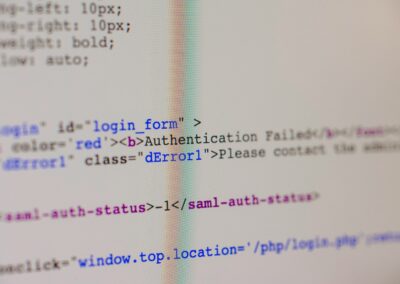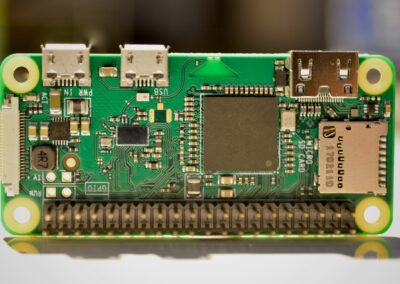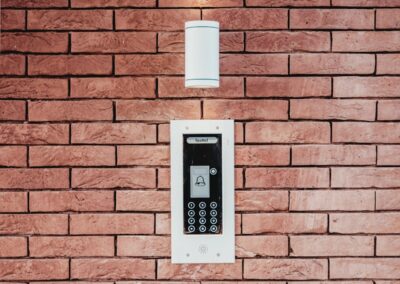How Implementing a Zero-Trust Security Model Helps in Mitigating IoT Security Risks
Understanding the Zero-Trust Security Model
In the evolving landscape of Internet of Things (IoT) security, the zero-trust security model has emerged as a vital strategy to mitigate security risks. The core principle of zero-trust is “never trust, always verify,” ensuring that every device, user, and network interaction is authenticated and authorized. This model is particularly crucial for IoT environments where a plethora of devices constantly communicate, often without stringent security measures in place.
The adoption of a zero-trust security model provides a robust defense mechanism against unauthorized access and potential breaches. Unlike traditional security models that trust devices within the network perimeter, zero-trust assumes that threats could exist both inside and outside the network. This approach is essential for IoT deployments where devices can be scattered across various locations, making perimeter-based security ineffective.
Implementing zero-trust in IoT environments ensures that every device interaction is continuously monitored and verified. By leveraging advanced authentication protocols, such as multi-factor authentication (MFA), organizations can ensure that only legitimate devices and users access the network. This level of scrutiny significantly reduces the risk of unauthorized access, data breaches, and other security threats, providing a secure framework for IoT operations.
Key Steps to Implementing a Zero-Trust Security Model
Adopting a zero-trust security model involves several critical steps, each designed to enhance the security posture of IoT systems. The first step is to establish a comprehensive inventory of all IoT devices connected to the network. This inventory should include detailed information about each device’s capabilities, firmware versions, and network access points. Understanding the network landscape is crucial for identifying potential vulnerabilities and areas that require stringent security controls.
Next, organizations should segment their network to isolate IoT devices from critical systems. Network segmentation involves creating separate network segments for different types of devices, ensuring that a breach in one segment does not compromise the entire network. This practice, known as micro-segmentation, limits the lateral movement of threats and enhances the overall security framework.
Implementing continuous monitoring and real-time analytics is another essential step in the zero-trust model. Organizations should deploy advanced security tools that provide real-time visibility into network activities, enabling the detection and mitigation of threats as they arise. These tools should be capable of analyzing data traffic patterns, identifying anomalies, and alerting security teams to potential security incidents. By continuously monitoring the network, organizations can proactively address security threats before they escalate.
Best Practices for Securing IoT Systems with Zero-Trust
To effectively secure IoT systems using a zero-trust security model, organizations should follow several best practices. First, implementing strong encryption for data in transit and at rest is crucial. Encrypting data ensures that even if a breach occurs, the data remains unreadable to unauthorized parties. Advanced encryption standards (AES) should be utilized to protect sensitive information transmitted between IoT devices and network infrastructure.
Another best practice is to enforce strict access controls through role-based access control (RBAC) mechanisms. RBAC ensures that only authorized users and devices have access to specific network resources, reducing the risk of unauthorized access. Organizations should regularly review and update access controls to reflect changes in the network environment and ensure compliance with security policies.
Regularly updating and patching IoT devices is also vital for maintaining a secure IoT environment. Manufacturers frequently release firmware updates to address security vulnerabilities, and organizations must ensure that these updates are promptly applied. Automated vulnerability scanning and patch management tools can streamline this process, ensuring that IoT devices remain secure and up-to-date.
Implementing Zero-Trust in the Middle East: Case Studies and Future Directions
Case Study: Zero-Trust Implementation in Dubai’s Smart City Initiative
Dubai’s ambitious smart city initiative provides a compelling example of zero-trust implementation in IoT environments. The city deployed a wide range of IoT devices to enhance urban management, including smart traffic systems, energy management solutions, and public safety applications. To secure these integrations, Dubai adopted a zero-trust security model, ensuring continuous authentication and monitoring of all IoT interactions.
The implementation involved creating a detailed inventory of all IoT devices, followed by network segmentation to isolate critical systems from potential threats. Advanced encryption and authentication protocols were employed to protect data integrity, and continuous monitoring tools provided real-time visibility into network activities. This comprehensive approach significantly enhanced the security of Dubai’s smart city infrastructure, ensuring resilient and secure IoT operations.
Case Study: Securing Industrial IoT in Saudi Arabia
In Saudi Arabia, a leading industrial conglomerate integrated IoT solutions to optimize manufacturing processes and improve operational efficiency. Recognizing the potential security risks, the organization adopted a zero-trust security model to safeguard its IoT environment. The implementation began with a thorough assessment of the network landscape, identifying all IoT devices and their respective access points.
Network segmentation was employed to isolate IoT devices from critical manufacturing systems, preventing lateral movement of threats. Strong encryption and multi-factor authentication were enforced to secure data transmission and access controls. Continuous monitoring tools were deployed to provide real-time insights into network activities, enabling the detection and mitigation of security threats. This approach ensured the secure integration of IoT solutions, enhancing the organization’s operational resilience.
Future Directions for Zero-Trust in IoT Security
As IoT deployments continue to expand, the adoption of zero-trust security models will become increasingly critical. Organizations must stay ahead of emerging threats by continuously evolving their security strategies. Future directions for zero-trust in IoT security include the integration of artificial intelligence (AI) and machine learning (ML) to enhance threat detection and response capabilities.
AI and ML can analyze vast amounts of data in real-time, identifying patterns and anomalies that may indicate potential security threats. By leveraging these technologies, organizations can enhance their zero-trust security frameworks, providing proactive and adaptive security measures. Additionally, collaboration with cybersecurity experts and industry stakeholders will be essential for sharing best practices and developing robust security standards for IoT environments.
The implementation of zero-trust security models in IoT environments offers a robust framework for mitigating security risks. By adopting a comprehensive approach that includes inventory management, network segmentation, continuous monitoring, and advanced encryption, organizations can secure their IoT deployments and protect critical data. As demonstrated by case studies in Dubai and Saudi Arabia, the zero-trust model provides a resilient and scalable solution for safeguarding IoT integrations. Looking ahead, the integration of AI and ML will further enhance the capabilities of zero-trust security, ensuring a secure and innovative future for IoT technologies.
#ZeroTrustSecurity #IoTSecurity #Cybersecurity #IoTRiskMitigation #DigitalTransformation #MiddleEastTechnology #IoTInUAE #IoTInSaudiArabia #ZeroTrustImplementation #SecureIoT































